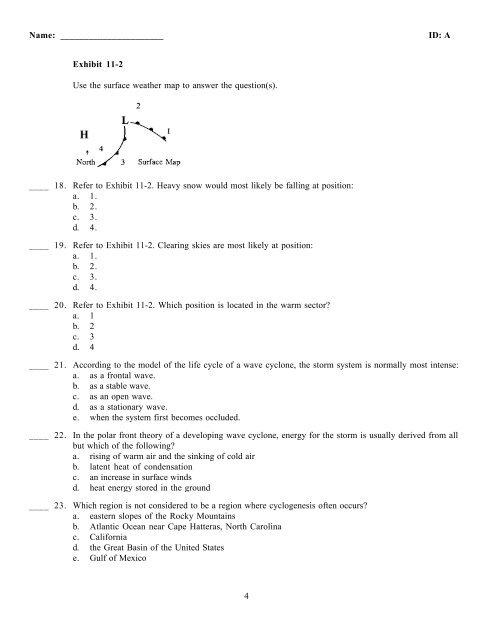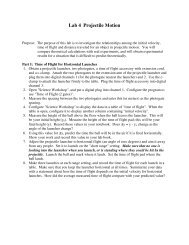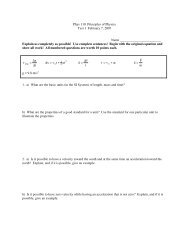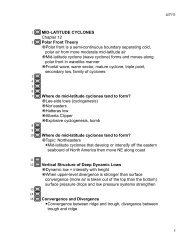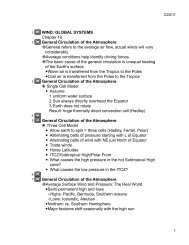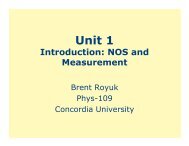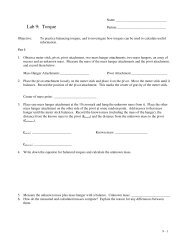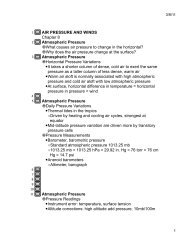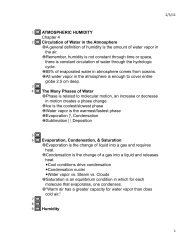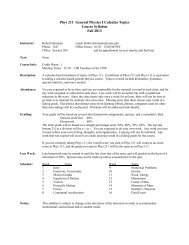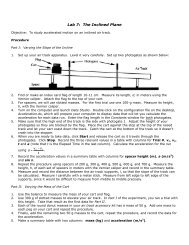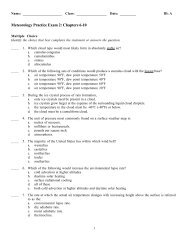Meteorology Practice Exam 3: Chapters 11-14
Meteorology Practice Exam 3: Chapters 11-14
Meteorology Practice Exam 3: Chapters 11-14
Create successful ePaper yourself
Turn your PDF publications into a flip-book with our unique Google optimized e-Paper software.
Name: ______________________ ID: A<br />
Exhibit <strong>11</strong>-2<br />
Use the surface weather map to answer the question(s).<br />
____ 18. Refer to Exhibit <strong>11</strong>-2. Heavy snow would most likely be falling at position:<br />
a. 1.<br />
b. 2.<br />
c. 3.<br />
d. 4.<br />
____ 19. Refer to Exhibit <strong>11</strong>-2. Clearing skies are most likely at position:<br />
a. 1.<br />
b. 2.<br />
c. 3.<br />
d. 4.<br />
____ 20. Refer to Exhibit <strong>11</strong>-2. Which position is located in the warm sector?<br />
a. 1<br />
b. 2<br />
c. 3<br />
d. 4<br />
____ 21. According to the model of the life cycle of a wave cyclone, the storm system is normally most intense:<br />
a. as a frontal wave.<br />
b. as a stable wave.<br />
c. as an open wave.<br />
d. as a stationary wave.<br />
e. when the system first becomes occluded.<br />
____ 22. In the polar front theory of a developing wave cyclone, energy for the storm is usually derived from all<br />
but which of the following?<br />
a. rising of warm air and the sinking of cold air<br />
b. latent heat of condensation<br />
c. an increase in surface winds<br />
d. heat energy stored in the ground<br />
____ 23. Which region is not considered to be a region where cyclogenesis often occurs?<br />
a. eastern slopes of the Rocky Mountains<br />
b. Atlantic Ocean near Cape Hatteras, North Carolina<br />
c. California<br />
d. the Great Basin of the United States<br />
e. Gulf of Mexico<br />
4


